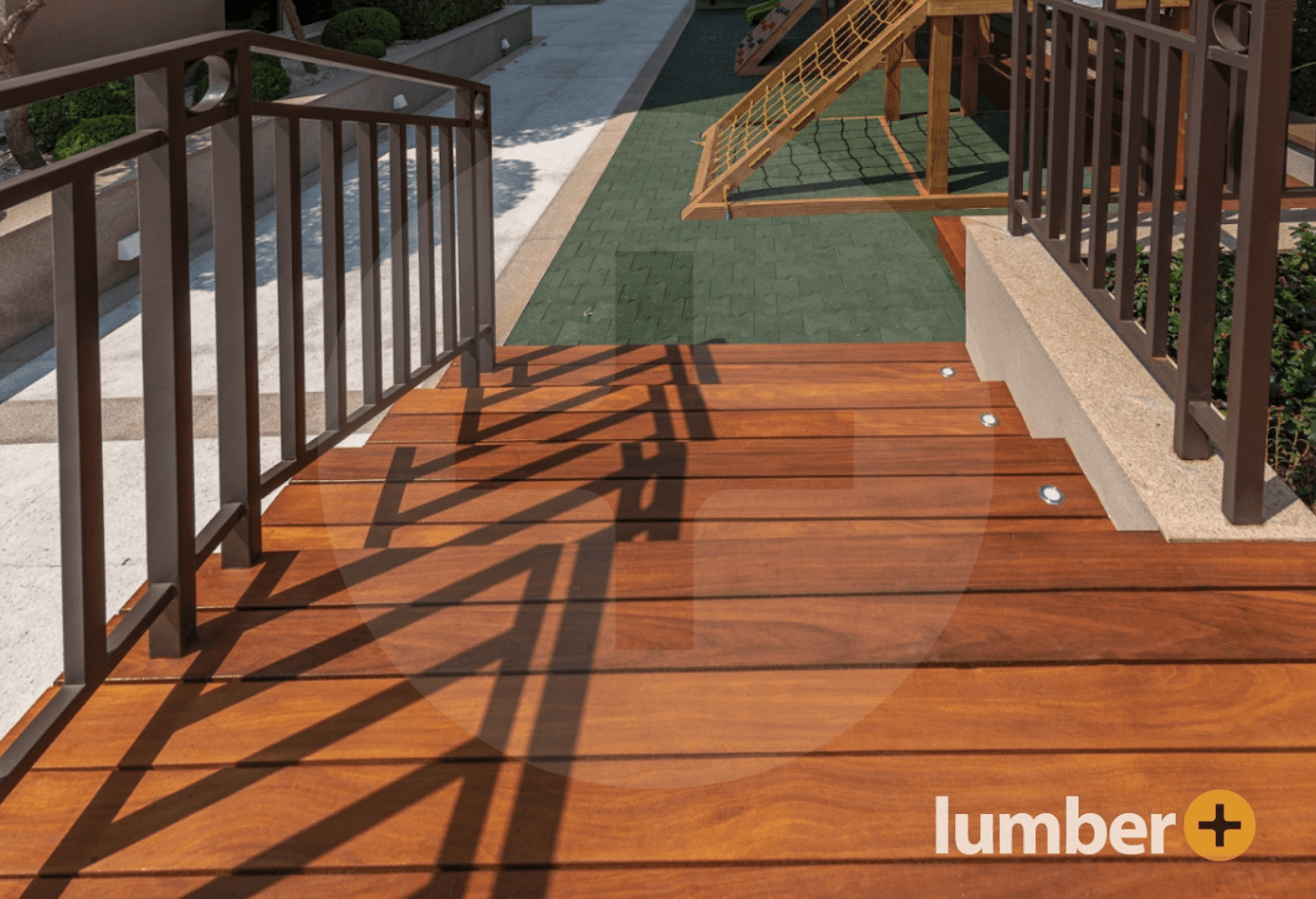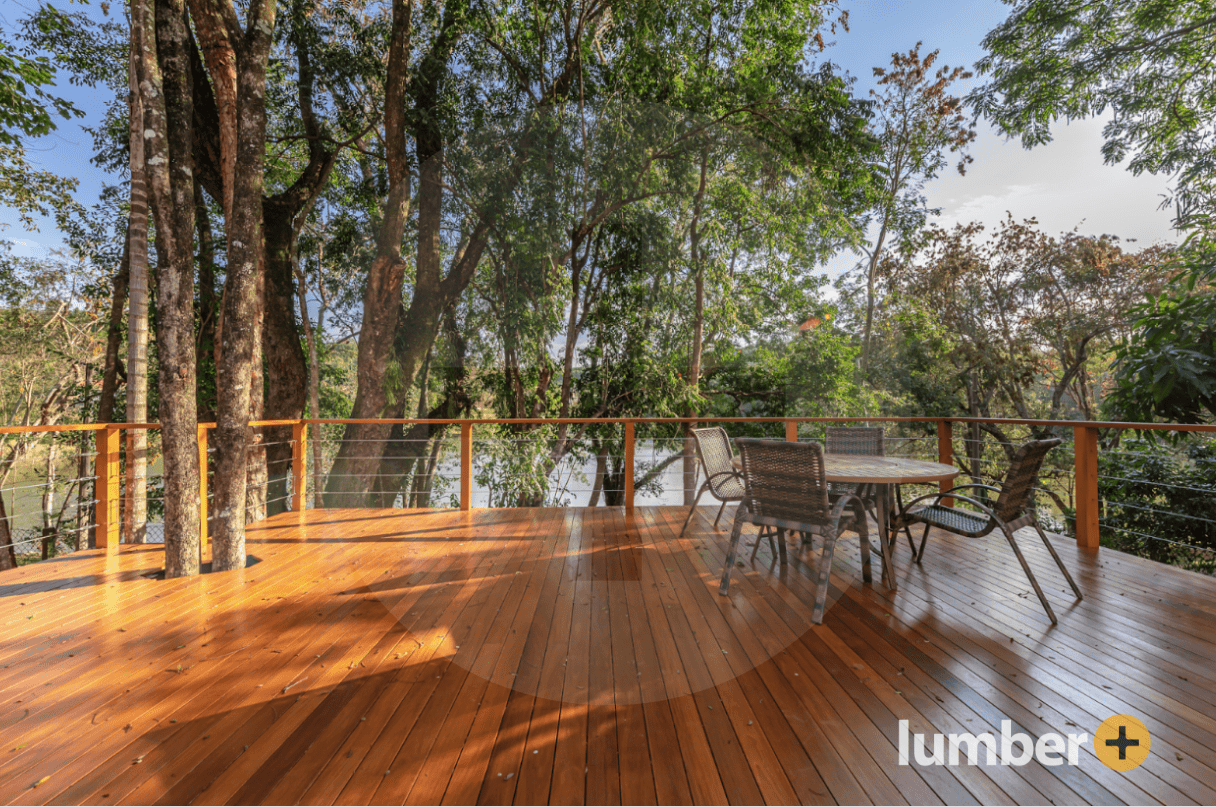Choosing the right deck railing height is not just a design decision—it’s a key aspect of safety and code compliance that ensures the usability and durability of outdoor spaces. Whether planning a residential or commercial project, understanding the correct requirements and practical details is essential. Lumber Plus supports your projects with high-quality materials and expert insights for reliable railing installations.
Deck Railing Height Standards
Residential Deck Railing Regulations
The International Residential Code (IRC) mandates that residential decks higher than 30 inches from the ground require railings that are at least 36 inches in height. This ensures users are safeguarded against accidental falls while complying with general safety guidelines. Material selection plays a significant role in achieving this balance, so choosing options that meet both code requirements and visual goals is important.
Commercial Deck Railing Requirements
Commercial spaces demand stricter safety regulations. The International Building Code (IBC) requires a minimum railing height of 42 inches for commercial decks. This is especially necessary in public areas such as outdoor venues and entertainment spaces. Lumber Plus provides materials that meet these stringent requirements, giving project managers confidence in their compliance efforts.
Stair Railing Height Guidelines

Caption: Wooden deck stairs with matching railings adding style and safety.
Deck stairs have specific regulations that differ from those for flat surfaces. Building codes require that stair railings measure between 34 and 38 inches from the nose of the stair tread to the top of the rail. This ensures a secure, comfortable grip for users going up or down the stairs and integrates seamlessly with the deck design. Proper installation of stair railings not only meets safety standards but also contributes to an overall cohesive structure.
Local Building Code Considerations
Although the IRC and IBC provide general benchmarks, local building codes can have additional rules influenced by regional factors like wind loads and seismic activity. Builders should always consult local authorities to verify these requirements. Neglecting local variations can result in costly redesigns or safety issues that compromise the project.
Baluster Spacing Requirements
Beyond railing height, spacing between balusters is crucial for safety. To comply with most codes, balusters should be spaced no more than 4 inches apart to prevent small children from slipping through. This aspect not only enhances user safety but also contributes to the overall look of the deck, offering a balanced design that aligns with Lumber Plus’s dedication to combining function and style.
Railing Installation Best Practices
Selecting Appropriate Railing Materials
Material choice can influence both safety and aesthetics. For example, glass railings provide a modern, open feel but require specific structural supports. Wood railings offer a classic look and sturdy support, while composite and metal options blend durability with minimal maintenance. Opting for high-quality materials from Lumber Plus ensures that your deck meets safety standards while delivering a polished finish.
Railing Installation Tips
When installing railings, accuracy is key:
- Measure Twice, Install Once: Always double-check measurements to ensure railings meet required heights and specifications.
- Secure Fasteners Properly: Use corrosion-resistant fasteners to maintain structural integrity and longevity.
- Level and Align Railings: Proper leveling prevents uneven railing lines that could compromise both safety and aesthetics.
Railing Maintenance Guidelines
Keeping railings well-maintained is as important as the initial installation. Routine inspections help identify issues like loose screws or warped materials. Regular cleaning and refinishing, particularly for wood railings, preserve their appearance and functional integrity. PVC and composite materials generally require less upkeep but should still be checked for wear and tear.
Design Considerations for Deck Railings

Caption: Brazilian hardwood decking brings timeless beauty to this outdoor deck.
Balancing Safety and Aesthetics
Railing height impacts more than safety; it affects the deck’s visual balance. Taller railings offer a sense of privacy and enclosure, while lower railings provide unobstructed views. When planning a deck, consider how the railing height complements the surrounding landscape and aligns with the purpose of the space.
Material Choices for Deck Railings
Mixing materials can add visual interest. For example, combining wood and metal or using transparent glass panels can create a striking look while adhering to code. Each material has its own strengths, and Lumber Plus provides options that cater to a wide range of project needs, blending functionality with style, including custom milling.
Ensuring Deck Railing Code Compliance
Meeting building code requirements goes beyond choosing the right railing height. Here are some essential tips:
- Consult Local Building Authorities: This ensures any unique local regulations are met, preventing compliance issues.
- Partner with Certified Contractors: Professional installers can help navigate complex specifications and guarantee proper installation.
- Select High-Quality Materials: Using reliable products from suppliers like Lumber Plus helps maintain compliance and durability.
- Document and Review: Keep detailed records of the installation process for potential inspections or property sales.
Lumber Plus Decking Solutions
Lumber Plus offers a range of decking materials that cater to various preferences and meet stringent safety standards:
- Hardwood Decking: Known for its long-lasting beauty and natural resistance to decay, options like Ipe and Cumaru provide both style and strength.
- Composite Decking: Low-maintenance and available in multiple colors and finishes, composites are a popular choice for modern projects.
- PVC Decking: Ideal for moisture-heavy areas, PVC options combine weather resistance with appealing aesthetics.
Whether planning a residential or commercial project, Lumber Plus supports your vision with products that balance safety, code adherence, and design.
Integrating Compliance with Design
Each part of your deck contributes to its overall appeal and functionality, and railing height is no exception. Prioritizing code compliance while maintaining design quality ensures a safe and attractive space. Builders and homeowners alike can rely on these practices to create secure, visually appealing decks.
Choose Lumber Plus for Your Decking Projects
Partner with Lumber Plus for dependable, industry-compliant materials that suit all project types. Our collection guarantees that your deck aligns with safety codes while meeting your design goals. Contact us today for more information.






